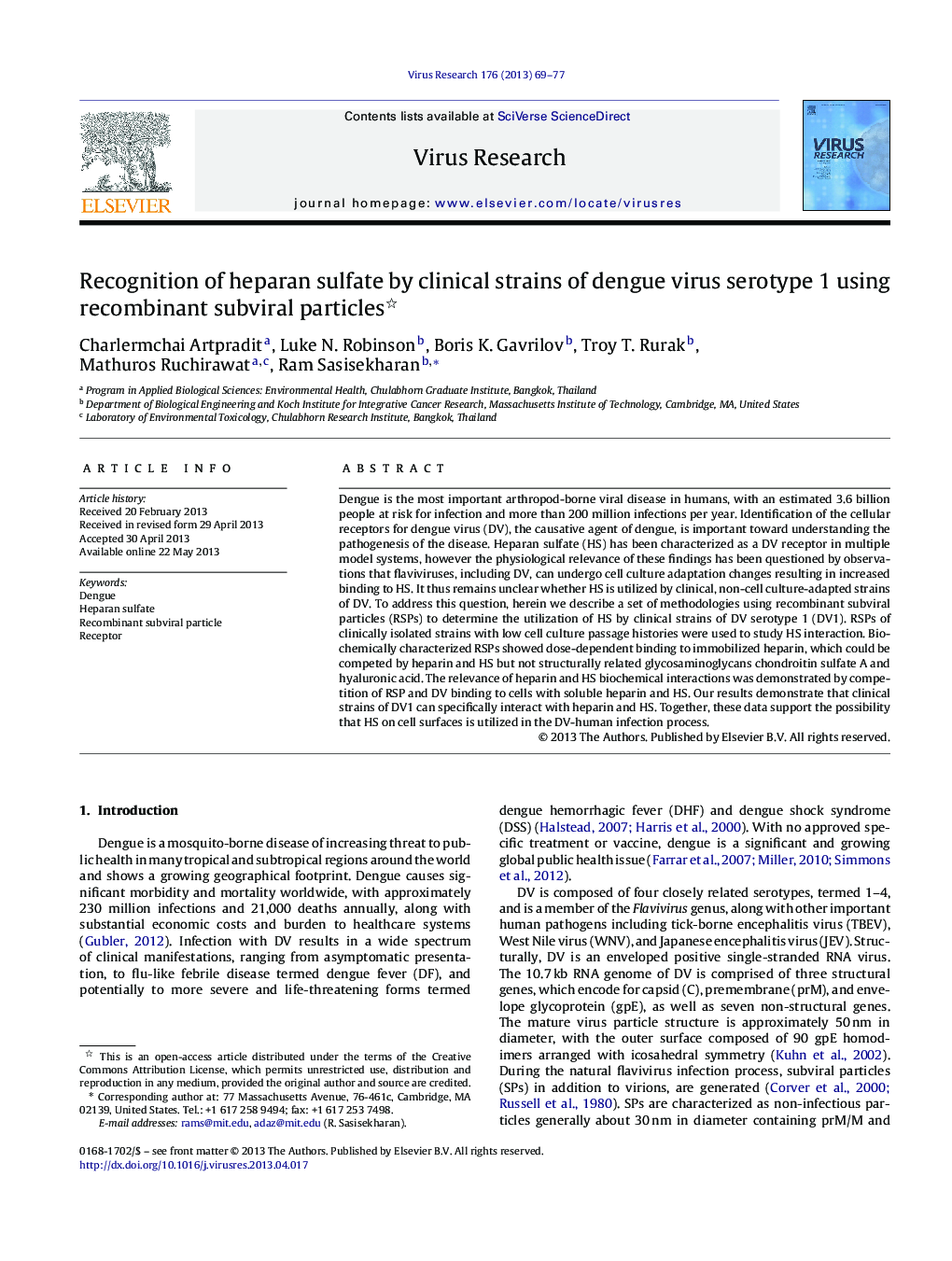| Article ID | Journal | Published Year | Pages | File Type |
|---|---|---|---|---|
| 6142952 | Virus Research | 2013 | 9 Pages |
Abstract
Dengue is the most important arthropod-borne viral disease in humans, with an estimated 3.6 billion people at risk for infection and more than 200 million infections per year. Identification of the cellular receptors for dengue virus (DV), the causative agent of dengue, is important toward understanding the pathogenesis of the disease. Heparan sulfate (HS) has been characterized as a DV receptor in multiple model systems, however the physiological relevance of these findings has been questioned by observations that flaviviruses, including DV, can undergo cell culture adaptation changes resulting in increased binding to HS. It thus remains unclear whether HS is utilized by clinical, non-cell culture-adapted strains of DV. To address this question, herein we describe a set of methodologies using recombinant subviral particles (RSPs) to determine the utilization of HS by clinical strains of DV serotype 1 (DV1). RSPs of clinically isolated strains with low cell culture passage histories were used to study HS interaction. Biochemically characterized RSPs showed dose-dependent binding to immobilized heparin, which could be competed by heparin and HS but not structurally related glycosaminoglycans chondroitin sulfate A and hyaluronic acid. The relevance of heparin and HS biochemical interactions was demonstrated by competition of RSP and DV binding to cells with soluble heparin and HS. Our results demonstrate that clinical strains of DV1 can specifically interact with heparin and HS. Together, these data support the possibility that HS on cell surfaces is utilized in the DV-human infection process.
Keywords
Related Topics
Life Sciences
Immunology and Microbiology
Virology
Authors
Charlermchai Artpradit, Luke N. Robinson, Boris K. Gavrilov, Troy T. Rurak, Mathuros Ruchirawat, Ram Sasisekharan,
